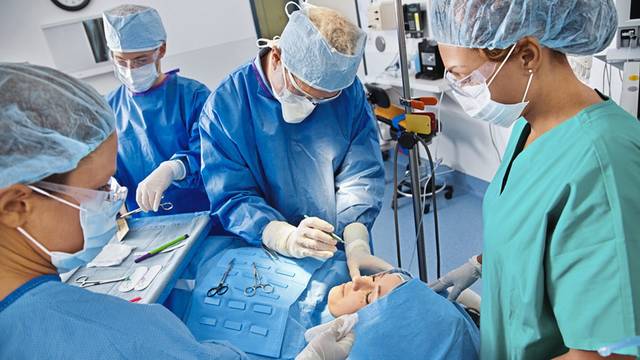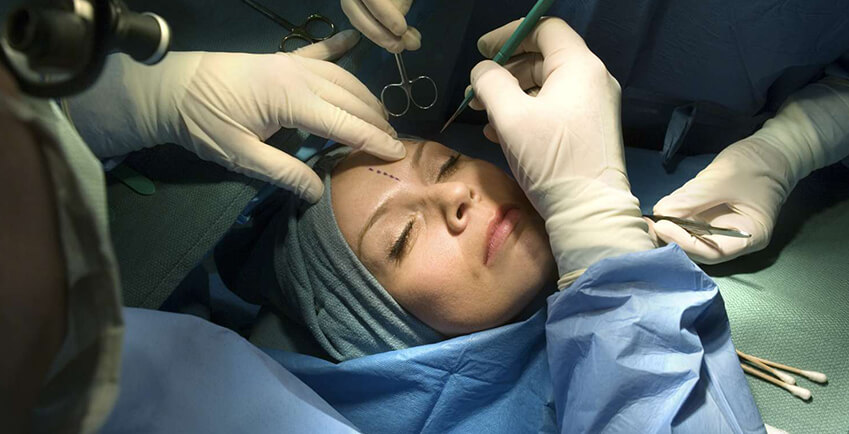The history of plastic surgery is as fascinating as it is complex, tracing back thousands of years to ancient civilizations. Initially emerging as a medical procedure for repairing injuries and deformities, its evolution has been shaped by wars, technological advancements, and changing societal attitudes towards beauty. Today, plastic surgery stands at the intersection of art and science, offering both reconstructive and cosmetic solutions that reflect our ongoing pursuit of well-being and aesthetic perfection. This journey from ancient reconstructive techniques to modern-day cosmetic enhancements highlights not only the technical progress but also the shifting cultural landscapes that have influenced its development.
Etymology and History of Plastic Surgery
Word Origin
The term “plastic” in plastic surgery comes from the Greek word “plastikos.” This means to mold or shape. The essence of plastic surgery lies in this concept. It’s about reshaping human tissues.
Plastic surgery’s name reflects its purpose. Surgeons mold and reshape body parts. They improve function or appearance, sometimes both.
Ancient Practices
Ancient India was a pioneer in reconstructive techniques. Texts dating back to 800 BC describe surgical methods for repairing noses and ears. These procedures were likely among the first forms of plastic surgery.
These ancient techniques set a foundation for modern practices. They showed that surgical intervention could restore form and function to damaged body parts.
Roman Influence
Roman medical texts significantly impacted European surgical methods. Their detailed accounts of surgeries influenced practices across the continent.
Romans documented treatments for facial injuries, showing an early understanding of reconstructive principles. This knowledge spread through Europe, shaping future developments in plastic surgery.
The Origins of Plastic Surgery
Ancient India
Sushruta, an ancient Indian physician, is a significant figure in the history of plastic surgery. He documented early methods that are astonishingly sophisticated for their time. His work included skin grafts and reconstructive techniques.
These procedures were detailed in texts that have survived for centuries. They show us how advanced ancient medical practices were. Sushruta’s contributions laid foundational knowledge that modern plastic surgery has built upon.
Ancient Egypt
Ancient Egyptian medical texts also offer evidence of early plastic surgery practices. These documents reveal the use of skin grafts for reconstructive work long before the term “plastic surgery” was coined.
The Egyptians’ understanding of human anatomy allowed them to perform complex surgeries with tools and techniques that were incredibly innovative for their era. Their work demonstrates an early form of surgical intervention aimed at repairing physical injuries.
Byzantine Influence
Oribasius, a Byzantine physician, compiled extensive encyclopedias during his lifetime. Among these writings were descriptions of cosmetic procedures which highlight an interest in aesthetic improvement alongside functional repair.
His compilations serve as historical records showing that concerns about physical appearance and the desire for enhancement have been part of human culture across different civilizations and centuries.
Early Developments in Plastic Surgery
Renaissance Progress
The Renaissance period marked significant progress in anatomical knowledge. This was a time of exploration and learning, with human beings eager to understand the workings of their bodies. Surgeons began applying this new knowledge to their craft, improving surgical techniques greatly.
One key figure during this era was Gaspare Tagliacozzi, an Italian surgeon. His work is often considered a cornerstone in the history of plastic surgery. He focused on reconstructive procedures, especially for the nose, which laid down foundational principles still relevant today.
Anesthesia Introduction
The 19th century brought about another pivotal advancement: the introduction of anesthesia. Before its use, surgeries were painful and traumatic experiences for patients. The discovery and application of anesthesia changed all that, making longer and more complex surgeries possible without causing pain to patients.
This development not only revolutionized plastic surgery but also all surgical fields across the board. It allowed surgeons to perform operations with greater precision and care, significantly reducing patient discomfort and recovery times.
Impact of War on Plastic Surgery Advancements
World War I
World War I was a turning point for plastic surgery. The war caused devastating injuries among soldiers, many of which were facial. This led to the need for new medical solutions.
Harold Gillies played a crucial role during this time. He set up specialized hospitals dedicated to facial reconstruction for wounded soldiers. His work laid the foundation for modern plastic surgery techniques.
Skin Grafting
The adoption of innovative skin grafting techniques marked another advancement during World War II. Surgeons developed methods to transfer skin from one part of the body to another.
This technique was pivotal in treating burn victims and those with severe facial injuries. It showed how plastic surgery could restore function and appearance.
Evolution of Aesthetic Surgery
Early Beginnings
The early 20th century marked the emergence of cosmetic surgery as a distinct field. This period saw the development of techniques aimed at enhancing appearance rather than just reconstructive purposes. Surgeons began to focus on procedures that improved public perception and self-image.
Initially, these surgeries were not as common or widely accepted. People were cautious, partly due to the risks involved and partly because altering one’s appearance for aesthetic reasons was a novel concept.
Technological Advances
By the late 20th century, two significant procedures emerged: liposuction and breast augmentation. These advancements represented substantial progress in aesthetic surgery. They offered more options for people looking to change their appearance.
Liposuction provided a method to remove unwanted fat from specific body parts, while breast augmentation allowed for changes in size and shape according to personal preference. Both procedures quickly gained popularity, becoming symbols of what modern plastic surgery could achieve.
Media Influence
The influence of media and celebrity culture significantly impacted the popularity of aesthetic surgeries. As celebrities openly shared their experiences with cosmetic enhancements, public interest grew.
-
Many sought similar transformations.
-
The desire to emulate celebrity looks drove an increase in surgical consultations.
This trend highlighted how deeply appearance and public perception are intertwined in society’s values. It also showed how advancements in plastic surgery have evolved beyond medical necessity into realms of personal choice and cultural influence.
Nascency and Development of Maxillofacial Surgery
World War Impact
World War I saw countless soldiers return with severe facial injuries. This need led to a new medical specialization: maxillofacial surgery. Doctors faced challenges in treating these complex wounds.
Surgeons had to innovate quickly. They developed new techniques for reconstructing faces. The goal was not just survival, but also helping soldiers regain normal lives.
McIndoe’s Contributions
Sir Archibald McIndoe was pivotal during this era. He treated burn injuries and facial deformities with groundbreaking methods. His work improved many lives.
McIndoe focused on both physical reconstruction and psychological recovery. He created a supportive community for his patients, which was revolutionary at the time.

Dental Integration
The integration of dental practices into surgical procedures marked another advancement. Complex facial reconstructions often required combined expertise from both fields.
This collaboration ensured better outcomes for patients with severe facial injuries. It highlighted the importance of interdisciplinary approaches in medicine.
Modern Techniques in Plastic Surgery
Minimally Invasive Procedures
Plastic surgery has seen a revolution with the introduction of minimally invasive procedures. These techniques use lasers and endoscopy to reduce recovery time. They also minimize scarring. This is a huge benefit for patients.
Lasers are now common in treatments that require precision without large incisions. Endoscopy, on the other hand, allows surgeons to view internal structures through small openings. This makes complex surgeries safer and quicker.
Microsurgery Advances
Microsurgery represents another leap forward in plastic surgery. Surgeons can transfer tissues or reattach parts of the body with incredible accuracy. This technique is crucial for reconstructive surgeries following accidents or diseases.
The use of specialized microscopes and instruments has made these delicate operations possible. Patients now have better outcomes than ever before. Their recovery times are shorter too.
3D Printing Innovation
3D printing technology has transformed pre-surgical planning and implant creation.
-
Surgeons can print exact replicas of a patient’s anatomy.
-
Custom implants fit perfectly, improving surgical results.
This technology helps surgeons plan complex procedures ahead of time, increasing safety and success rates.
Diverse Sub-specialties in Plastic Surgery
Reconstructive vs Cosmetic
Reconstructive and cosmetic are two main branches in the history of plastic surgery. Physicians use reconstructive surgery to repair tissues damaged by accidents, diseases, or birth defects. This branch focuses on restoring function and normal appearance.
Cosmetic surgery, on the other hand, aims to enhance a person’s appearance according to their desires. It includes procedures like facelifts and breast augmentation. The goal is often related to improving self-esteem rather than repairing damage.
Specialization Areas
The scope of plastic surgery has expanded over time, leading to various specialization areas. Three key specialties include:
-
Craniofacial Surgery
-
Hand Surgery
-
Burn Care
Craniofacial surgery corrects congenital and acquired deformities of the skull, face, and jaw. Hand surgery restores function after injuries or conditions like carpal tunnel syndrome. Burn care involves treating burn-related injuries to reduce scarring and regain mobility.
Growth of Non-surgical Treatments
In recent years, non-surgical cosmetic treatments have seen significant growth worldwide. These treatments offer less invasive options for those seeking aesthetic improvements without traditional surgery.
Key non-surgical treatments include:
-
Botox injections for reducing wrinkles.
-
Dermal fillers for volume restoration and contouring.
These options provide quick results with minimal downtime compared to surgical procedures. They’ve become a popular part of many people’s beauty routines across the globe.
Closing Thoughts
The journey through the history of plastic surgery reveals a field that has evolved significantly from its origins. Initially rooted in reconstructive techniques, it has expanded to include aesthetic surgery, maxillofacial surgery, and a plethora of sub-specialties. Each phase of development, influenced by societal needs and technological advancements, reflects the adaptability and innovation inherent in this medical discipline. Modern techniques showcase the precision and safety achieved, offering patients diverse options for both reconstructive and cosmetic purposes.
Understanding the past and present of plastic surgery encourages a deeper appreciation for its complexity and impact on individuals’ lives. As the field continues to advance, staying informed about these developments is crucial for anyone considering plastic surgery or simply interested in its historical progression. Engage with reputable sources and consult certified professionals to explore the possibilities that plastic surgery holds for the future.
Frequently Asked Questions
What is the etymology of “plastic surgery”?
Plastic surgery derives from the Greek word “plastikos,” meaning to mold or give form. It reflects the discipline’s essence: reshaping and reconstructing body parts.
How did plastic surgery originate?
Plastic surgery originated in ancient India, with techniques for reconstructing noses documented in 600 BCE. These early methods laid the groundwork for modern surgical practices.
What were some early developments in plastic surgery?
Early developments included skin grafts and reconstructive surgeries performed by ancient Romans and Egyptians, focusing on repairing damaged bodies, particularly facial injuries.
How did war influence plastic surgery advancements?
Wars significantly advanced plastic surgery as surgeons developed new techniques to treat extensive injuries. World War I and II were pivotal, leading to innovations like flap surgeries to repair severe wounds.
When did aesthetic (cosmetic) surgery become popular?
Aesthetic surgery gained popularity in the late 19th and early 20th centuries as techniques improved, allowing for safer cosmetic enhancements that catered to personal desires beyond medical necessity.
What is maxillofacial surgery?
Maxillofacial surgery specializes in treating diseases, injuries, and defects affecting the face, jaw, neck, head, and hard/soft tissues of the oral/maxillofacial region. It emerged as a distinct field following WWI due to increased facial injury cases.
How have modern techniques improved plastic surgery?
Modern technology has revolutionized plastic surgery through minimally invasive procedures using lasers and endoscopy. This advancement reduces recovery times while improving outcomes significantly compared to traditional methods.
Are there different sub-specialties within plastic surgrey?
Yes; besides cosmetic enhancements like facelifts or liposuction; subspecialties include cranio-maxillofacial therapy handling congenital anomalies or trauma-related issues.





